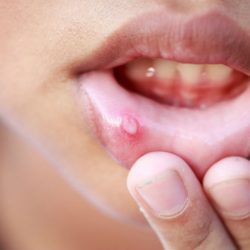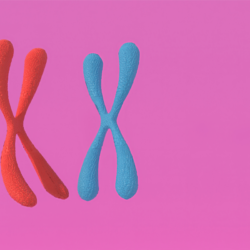Nervous system disorder and Parkinson’s disease
Parkinson’s is a neurological disease which causes loss of neurons in the midbrain and damage to the nigrostriatal (telencephalon) bundles. It affects 0.4% of people under 40, 1% of people over 65 and 10% of people over 80.
At the level of these specific areas of the brain, there is indeed a dysregulation of the dopaminergic system (decrease in dopamine production) and, consequently, an increase in the stimulation of cholinergic neurons. This pathology is slowly progressive, and characterized by resting tremors, muscle rigidity, slow and reduced movements (bradykinesia) and instability of gait and / or posture. The diagnosis of the disease is clinical. Treatment therefore aims to restore dopaminergic function in the brain. The onset of the disease is therefore insidious, with abnormal fatigue, poorly localized pain and hand tremor.
How it works ?
The pathological characteristic of Parkinson’s disease is in short the presence of Lewy bodies containing synuclein in the nigrostriate system. However, synuclein can build up in many other parts of the nervous system.
Lewy bodies appear in a certain time sequence, and in particular many experts believe that Parkinson’s disease develops relatively late in the context of systemic synucleinopathy.
In Parkinson’s disease, neuronal degeneration is mainly localized in pigmented neurons of the substantia nigra, locus ceruleus and other dopaminergic cell groups of the brainstem. The loss of the neurons of the substantia nigra causes in particular a loss of dopamine in the part of the basal ganglia and consequently causes a large number of motor manifestations of Parkinson’s disease.
Where does this disease come from ?
A genetic predisposition is indeed probable, at least in some cases of Parkinson’s disease. About 10% of patients have a family history of Parkinson’s disease. Several responsible genes have been identified. Inheritance is autosomal dominant for some genes and autosomal recessive for others.
In the genetic forms, the onset tends to be younger, but the development is generally milder than in the late-onset form of Parkinson’s disease which is probably non-genetic.
- The dopaminergic system involved :
The neurotransmitter of the dopaminergic system is dopamine. It attaches to D1, D2, D3, D4 and D5 receivers.
Dopamine plays a role in voluntary movements, behavior, cognition, motor functions, motivation, the reward circuit, sleep and memorization. It reinforces usually beneficial actions such as eating a healthy food by inducing the sensation of pleasure which thus activates the reward / reinforcement system.
It is therefore essential for the survival of the individual. More generally, it plays a role in motivation and risk taking. This molecule is also involved in some abstract pleasures like listening to music.
When dopamine production is blocked or slowed down (even endogenously), it can cause Parkinson’s disease.
Naturopathic advice for better living with Parkinson’s disease on a daily basis :
A healthy lifestyle and good daily habits can allow people with Parkinson’s to slow the progression of the disease, as well as to regain a little motor skills and autonomy.
There is no specific diet for people with Parkinson’s, but here are some helpful dietary recommendations :
- Avoid diets, choose a varied diet, focusing on fruits, vegetables and fibers, in order to combat the often present constipation. Increase the intake of fruits, green vegetables and grains
- Remember to drink plenty of fluids, hydrate yourself enough, while avoiding alcohol
- Swallowing disorders can be improved by taking a little ice or a sip of ice water at the start of a meal.
- Limit meats, fish, cold cuts and dairy products in the morning and at noon; rather consume them in the evening at dinner
- Take a vitamin E cure from time to time; it limits the oxidation of omega-3 fatty acids and iron and is particularly indicated in Parkinson’s disease
Live a certain autonomy on a daily basis :
- To get up more easily, consider raising the bed and the rear legs of the seats, preferably chosen with armrests and reclining backrest
- An electric toothbrush or razor can make grooming easier
- To dress, prefer zippers to buttons, loose clothing and elastic belts. Choose shoes that are easy to put on and do not have laces
- For meals, consider electric can openers and non-slip placemats
The practice of one hour a day of exercise allows the muscles to maintain their flexibility and facilitates the movement, maintain your body :
- In the event of an engine blockage, when the feet seem stuck to the ground: stop for a few seconds and imagine a fictitious obstacle to overcome. To restart the movement, pay attention to the elevation of the knee, attack the ground with the heel while raising the opposite arm.
- Regular walking is the best exercise
- Several times a day, exercise movements of flexion, extension and rotation of the trunk and neck, squats. Never force and stop in case of pain
- Stimulate speech by reading aloud, work on the expressiveness of the face by grimaces, smiles, mimes, laughter, etc.
- Relaxation through yoga or sophrology allows psychic control of tremors and muscle stiffness
- Stimulate your dopaminergic system: listen to music, sing … treat yourself !
To live in society :
- Continue your cultural and sporting activities
- Take advantage of the dynamism of associations of people with Parkinson’s disease
- The France Parkinson association plays an important role in providing information and providing valuable advice on how to learn to live with the disease.
Plants and Parkinson’s disease :
Passionflower has an action in Parkinson’s disease. High levels of harmane and norharmane have also been found in the serum of patients with Parkinson’s disease, giving rise to the suspicion of an involvement of certain beta-carbolines in the pathogenesis of Parkinson’s, from an endogenous metabolic source or from an exogenous contribution.
This plant is also antispasmodic and depressive by maltol (present in small quantities) which causes muscle relaxation. Beta-carbolines are central stimulants and MAOIs. Passionflower is therefore of great help in Parkinson’s disease.
Dosage: 5 ml to be mixed in a large glass of water, to drink 2 times a day for 1 month, renewable for 3 months.
-
Oat EPS :
The N-acetyl-cysteine contained in oats actually improves the functioning of dopamine and decreases the symptoms in patients suffering from Parkinson’s disease.
Dosage: 5 ml to be mixed in a large glass of water, to drink 2 times a day for 1 month, renewable for 3 months. Possibility of mixing at 50% with the EPS of Passionflower as part of a synergy.
The true sweet flag has neuroprotective properties; beta-asarone reduces neuronal autophagy in a dose-dependent manner. Thanks to this plant, we note a strong potential in Parkinson’s disease. The beta-asarone it contains is sedative of the central nervous system, neuroprotective and modulator of the dopaminergic system.
Posology: Place a tablespoon (5 to 8g) of rhizomes of true sweet flag in a stainless steel saucepan (avoid aluminum) and pour in 1/2 liter of boiling water. Simmer for 5 to 30 minutes and cover to prevent evaporation. Filter and consume the decoction, sweetened or not, within 24 hours, at the rate of 2 cups per day. Keep cool.
-
CBD oil :
CBD may reduce the progressive degeneration of the brain dopaminergic system. It decreases inflammation, modulates the signaling system in the basal ganglia, and reduces excitotoxicity, calcium influx, glial activation and oxidative damage that contribute to the degeneration of substantia nigra.
Dosage: Pour a few drops of CBD under the tongue. Do not exceed the dose of 1 mg of CBD oil per 5 kg of daily body weight.
This homeopathic dilution would decrease tremors, abnormal movements and stiffness, as well as improve speech and movement control.
Dosage: Take 10 to 15 drops to dilute in a little water. Keep in your mouth for a few moments before swallowing.





